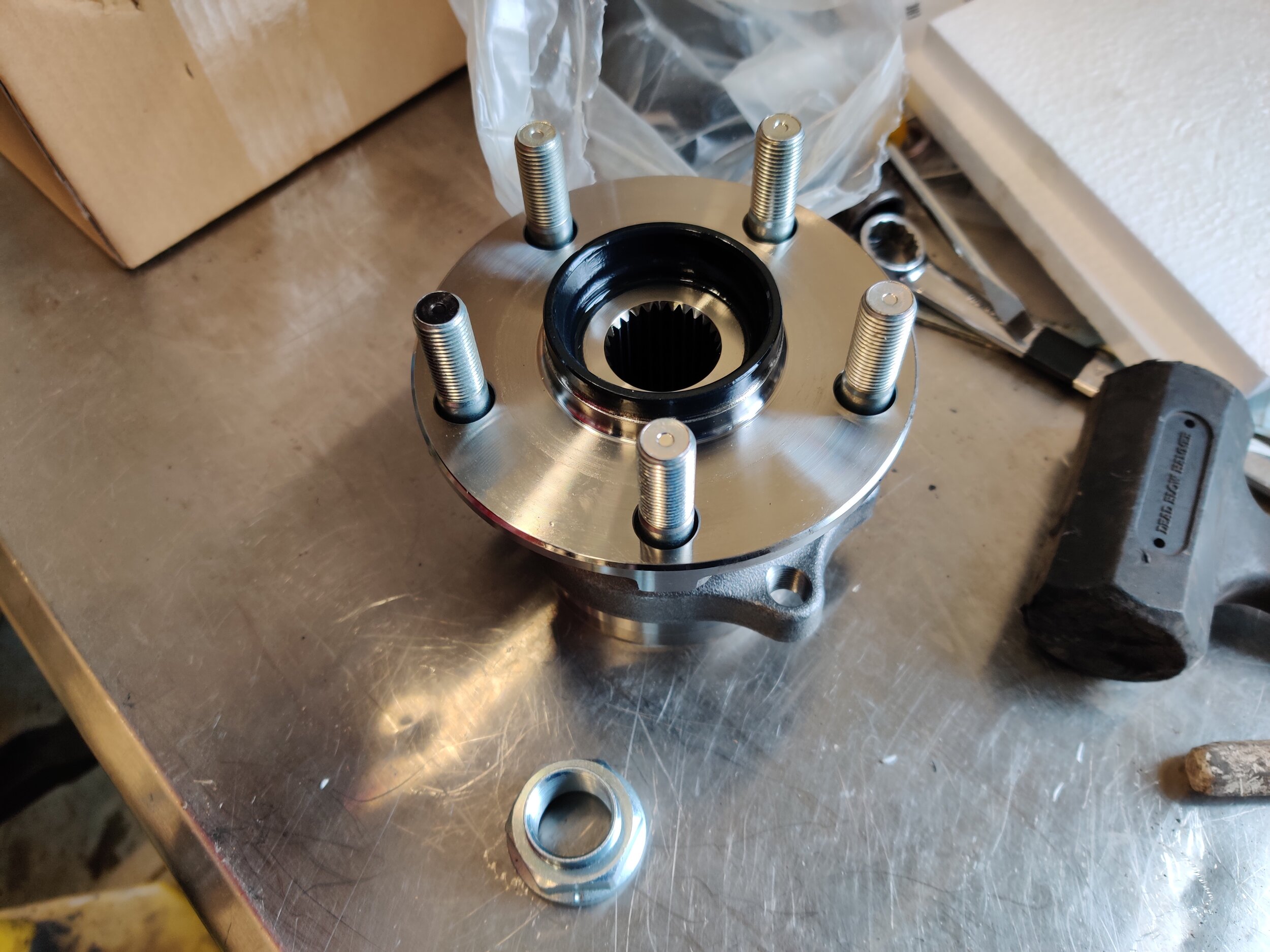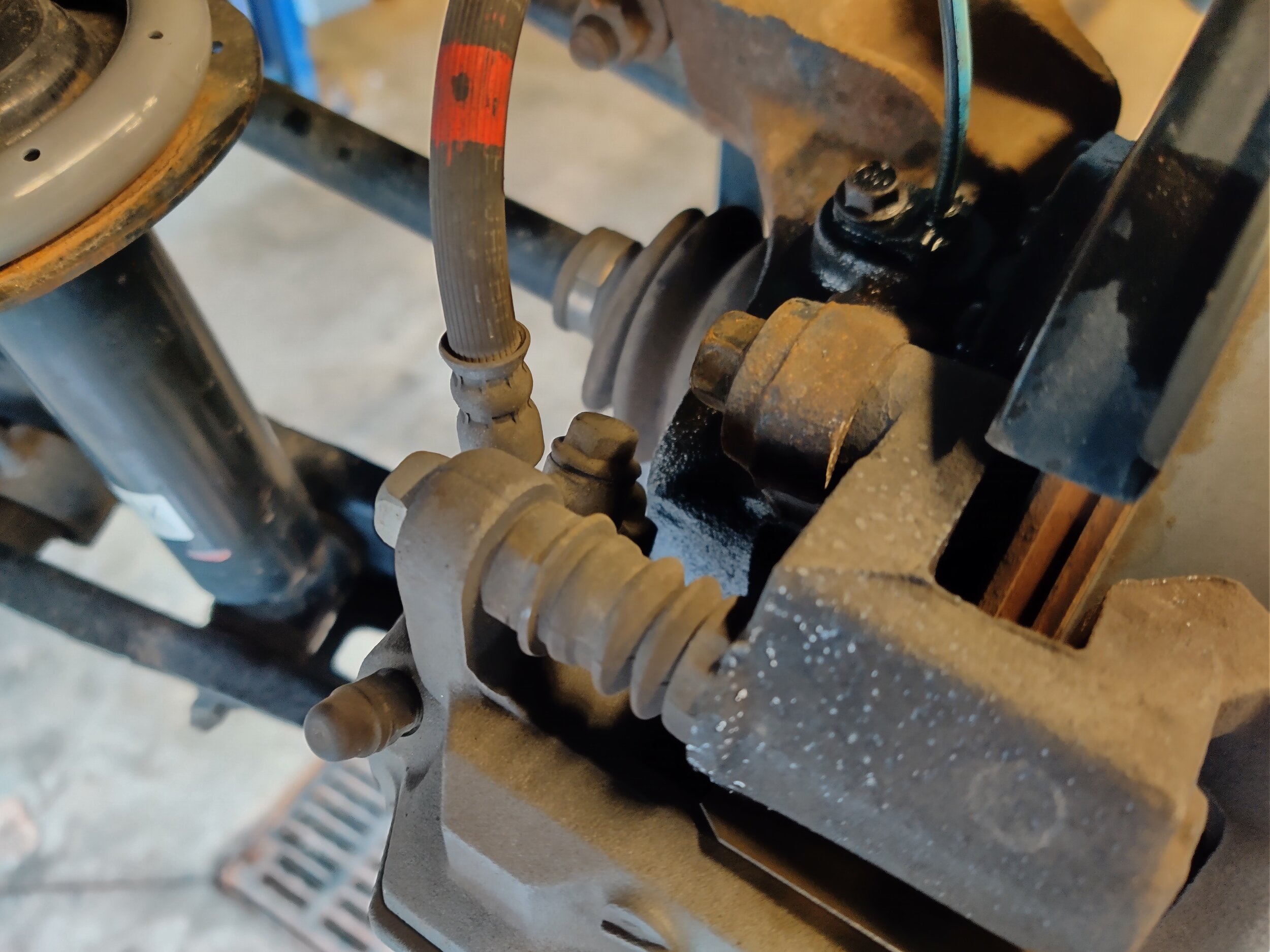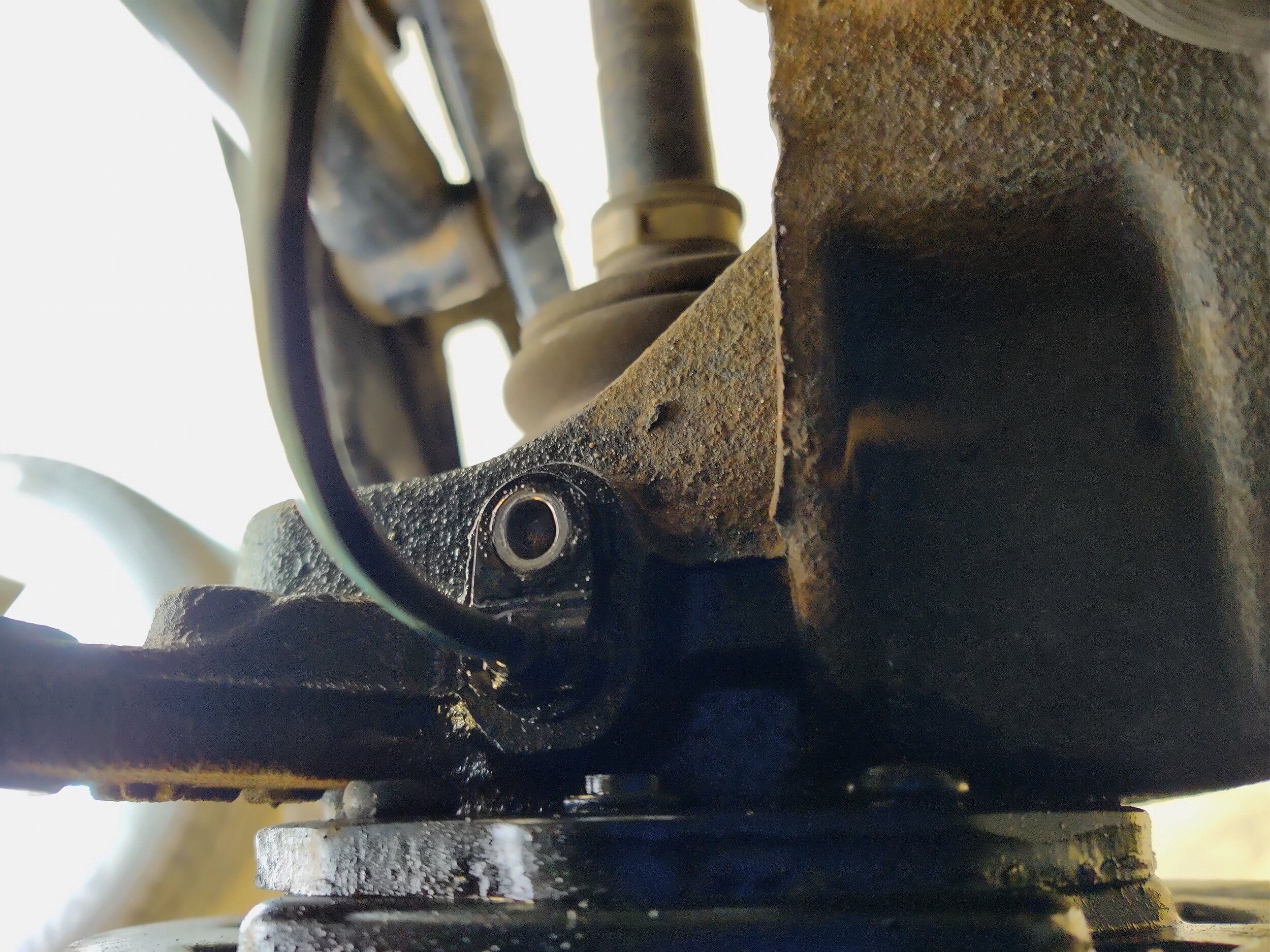Subaru rear wheel bearing! It's a Subaru thing....
Subaru’s and wheel bearings… a match not made in Heaven. Some might even think they hate one another with a passion. Lucky for us Subaru decided to use bolt in hub bearings after 2008 on basically all their vehicles, this will be the style we are replacing today.
New bearing and axle nut ready for service!
If you are hearing a nice humming noise from the rear of your car, it is highly likely to be one of the rear wheel bearings. If you have access to a lift you can use a stethoscope to listen to the backside of the hub and discern which is the unit that needs replacement. Otherwise you can do your best by listening inside the car while someone else is driving, sometimes you get a better ear from a different seat.
Time frame
This is a tough one to gauge, if you have a rusty underbelly of the car. Get ready for a bit of a battle. For those with less rusty Subarus you will spend a good 30-50 minutes with your car. I recommend soaking everything behind the dust shield with rust penetrant to help you along in this.
Tools
Get your impact guns ready! I use a Milwaukee 1/2 impact for lug nuts and axle nuts. The Milwaukee 3/8ths impact takes care of the rest of the bolts.
Also up on your list of necessary tools are a Pry bar with hammer cap, your favorite hammer, 32mm axle nut socket and a good old ratchet or Milwaukee 3/8ths electric ratchet if you are me.
Parts
As with most Subaru products they are symmetrical side to side. So if you are picking up a wheel bearing either side takes the same part number. Make sure to pick up a new Cv axle nut to torque it back down properly.
We are working on a Forester today so this is our part number and here is a link. Forester hub bearing.
Shiny new parts! This fits
2013-2019 Crosstrek
2014-2018 Forester
2012-2019 Impreza (non turbo)
Installation
It’s that time again to start another repair and like many other repairs you will be lifting the vehicle up. This repair involves plenty of hammering and prying, so make sure your vehicle is on jack stands and very stable to keep from hurting you or any helpers.
Next we will remove the lug nuts and off with the wheel, then set it safely to the side.
Here is where we begin, wheel off we can now locate all the bolts we need to remove.
We can now locate the brake caliper bracket and remove the two 14 mm bolts that hold it on. You may now slide the caliper off and hang it out of the way with a bungee cord or wire hook.
Lower caliper bracket bolt can be found here
Here is where we can locate the upper bolt.
Up next will be removing the brake rotor, make sure your parking brake isn’t set before doing this. My favorite technique is using a threaded bolt inside the rotor, running it down will push the rotor off of the old hub.
Here is our axle nut, a decent impact can break this free easily. You can also see the the two threaded holes on the brake rotor that can help easily remove it.
Axle nut and brake rotor removed.
You can remove the axle nut now with your 32mm socket and impact gun. Once it is removed this is a good time to check that the axle slides in and out, it can often become seized by dirt and rust. If it won’t move you can use a punch to help free it up, you may even need an air hammer for those really stuck Cv shafts.
Here is your view with the axle nut and rotor removed. You can use a small punch on the center of the axle shaft it doesn’t move freely back and forth. This will help when removing the hub from the shaft.
Located on the top of the knuckle behind the brake rotor backing plate you will find the abs sensor. I remove this to make sure it isn’t damaged when removing the bearing and shifting the axle around. It is a single 10mm bolt and then it just needs a bit of wiggling to remove it. Be careful not to damage it, it is a plastic bodied sensor.
Now you see the abs sensor..
Now you don’t. Place it somewhere safely.
Now is the time to take the four bolts that hold the wheel bearing to the knuckle. From the backside of the knuckle these are easily visible next to the Cv boot. A 14mm socket is your go to for removal, if your vehicle is older or rusty they can be difficult to remove.
The four bolts that hold the hub in surround the cv axle, they are easy to access but may need a extension to help.
With all the bolts removed we can break the hub free and make room for the new unit. I have had great luck using my smaller pry bar with a hammer striking handle on it. Another option is a flat chisel to separate the knuckle from the bearing. The backing plate has a reinforced piece of metal across it that you can use your pry bar/chisel to break them free of one another. Once one side starts to separate you can move to the opposite side to keep it coming out evenly.
A top down view of a good place to start prying/separating the hub from the knuckle.
As the hub separates from the knuckle up top, we can move to the lower section to keep it moving out evenly.
This is easily the most difficult part of the bearing removal. Feel free to spray copious amounts of rust penetrant to make everything easier. Some are more difficult than others, but after sometime it should break free.
Prying from the opposite side, nearest the front of the vehicle.
Once the hub begins to come free you most likely will see the backing plate has come with the bearing. Holding the backing plate and hammering in a circle will break the hub bearing free finding it's way to the floor.
At this point we need to pull the shield and bearing off of the axle shaft.
Up next is the last step of removing it from the shield. Hammer in around to break it free.
Make sure the everything is cleared away on the floor, the last hammer strike will most likely send the hub flying out.
You can now place your new bearing inside the backing plate, the holes will line up when it is in the proper orientation. Using your hand you can start to spin the hub bolts back in. With one bolt started you will find the others line up and can be installed.
Line the holes up a best you can You can use a screwdriver to help. Having the axle nut on will keep the hub the from coming off.
With those bolts installed you can start working backwards to put everything back together. Make sure your parking brake shoes are center and the brake rotor pops back over them. If they are a little off the rotor should help recenter them when it is installed. Also make sure to properly torque your rear axle nut and stake it to keep everything together.
Double check for proper brake operation before taking a test drive. Then move very slowly testing that the brake are operational, after you check that on your list you can go for a quick drive and then return to double check your work.
Congratulations! Your wheel bearing has been replaced and that annoying humming noise has been removed!
Amazon tool links!
Milwaukee 3/8ths electric ratchet
Amazon part links!
2012-2019 Impreza (non turbo)hub bearing





















